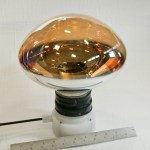Navy
In honor of Veteran's Day, we must not forget to thank the dolphins (and more recently sea lions) that have been active members of the US Military. The US military used dolphins trained to find and disarm underwater mines in the Iraq War. Eight dolphins served as the first marine mammals in active combat as part of the "Special Clearance Team One." The dolphins worked alongside drones equipped with sonar, Navy SEALS, reconnaissance swimmers from the Marine Corps, and divers trained to disarm explosives. When the drones detected something suspicious, the dolphins were able to discern whether…
Image of wet spider web from www.photoforum.com
The US Navy has decided to sponsor research conducted by Dr. Randy Lewis, a specialist in spider silk, at Utah State University. Their interest in the research lies in the ability for spider silk to maintain adhesiveness even under wet conditions. Therefore, Navy officials are seeking to create a synthetic spider silk that they can manufacture for use as an underwater adhesive.
Source:
Utah State University
How do scientists make glass stronger? Break it.
Brookhaven Lab physicists and engineers take this hands-on approach a step further. In order to strengthen the design of glass bulbs known as photomultiplier tubes, the researchers submerge the devices in 500,000 gallons of pressurized water, punch a small hole through their sides, and watch as the glass cracks, crunches, and, just milliseconds later, implodes (see videos below).
The implosion of a photomultiplier tube in a tank at BNL, as seen through combined high-speed camera images. Time scale: 6,000 frames per second.
Fifty thousand…
Talking to submarines is a very a tricky business - most communication systems are based on radio or acoustic signals, but neither travel very far in water. This means that to pick up radio signals, submarines must surface or raise communication buoys very close to the surface, neither of which are appropriate for nuclear-powered stealth submarines that remain deep underwater for months at a time.
Radio operators can overcome the problem of poor signal penetration by using giant arrays broadcasting in extremely-low frequency ranges, but these are expensive, difficult to build, and…
This week, two different announcements have given the whales of the world the right to be upset. It seems they can get no relief from the constant pressures we place on their populations.
Firstly, the US Supreme court decided that Navy sonar was more important, so they overturned a lower courts ruling that forced the Navy to restrict sonar practices within 1.5 miles of a whale. It sets a precedent that shoots down activist attempts at whale protection. While I understand the need for national security, it just sucks for the whales off the coast of California.
Then, all hopes of reduced…



